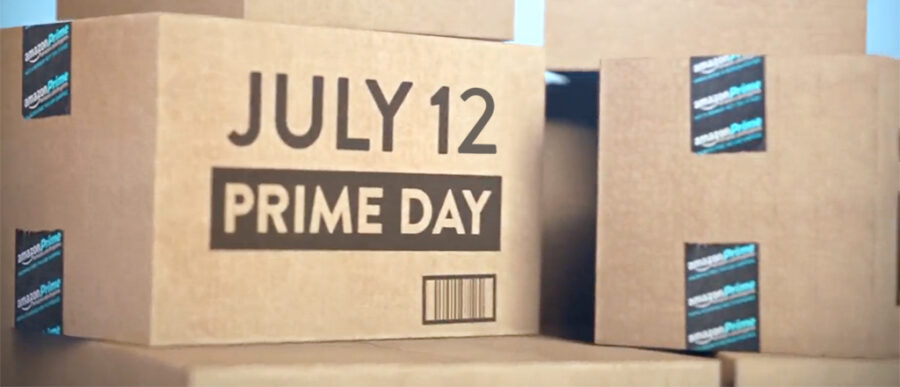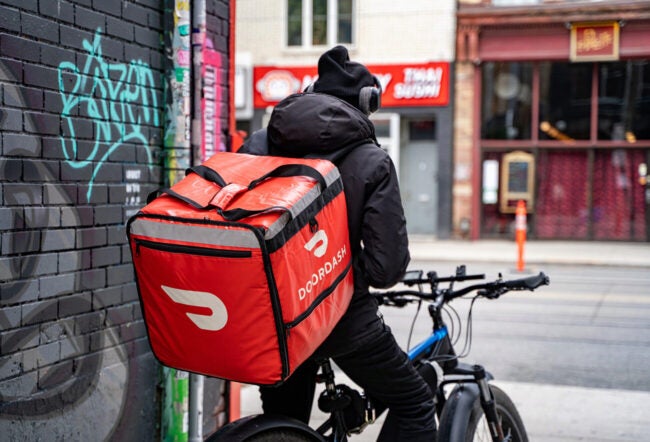Amazon’s self-created sales holiday on July 12 — Prime Day — set records for the two-year old event, and offered cues to longer-term shifts in retailing trends. Amazon’s success with Prime Day is a testament to the stickiness of its customers, whose growing numbers reveal the huge distance rival Walmart has to cover, according to experts.
Prime Day sales also came as a windfall for retailers. The only other big retail event this time of the year is the back-to-school shopping season during July and August. Amazon, meanwhile, is shifting strategies, pushing the “convenience” it offers as a shopping destination instead of its earlier, low-price positioning, analysts note.
On Prime Day, Amazon saw its online orders increase by more than 60% worldwide and 50% in the U.S., the company said in a press release. That day, it sold globally more than 90,000 TVs, more than two million toys and more than a million pairs of shoes, among other products. The event may have added between $500 million and $600 million in incremental sales for Amazon, Morningstar consumer strategist R.J. Hottovy said in a CNBC report.
Even as Amazon boasted about its Prime Day sales, it has to contend with rising shipping costs, according to Denise Dahlhoff, research director at Wharton’s Baker Retailing Center. “[Amazon is] trying to go more the higher-margin route,” she said. For example, it is “pushing movies because there are no delivery costs,” she noted. “Amazon’s positioning has changed from focusing on pricing to being more of a convenient retailer.”
A big part of the sales surge Amazon experienced on Prime Day is explained by the company’s base of Amazon Prime subscribers, according to Michael R. Levin, partner and co-founder of Consumer Intelligence Research Partners, a Chicago-based research services firm that tracks consumer spending patterns. Amazon Prime, priced at $99 annually, offers members free two-day shipping and other features including unlimited streaming of movies and discounted book lending. As of June 30, Amazon had about 63 million Prime members in the U.S. That represents an increase of 19 million over the year-ago number, according to research by Levin’s firm, which uses consumer surveys to highlight trends.
“Amazon’s positioning has changed from focusing on pricing to being more of a convenient retailer.” –Denise Dahlhoff
“[Amazon’s] Prime membership is staggering,” said Sarah Halzack, national retail reporter at the Washington Post. “It suggests just how large a hill Walmart has to climb if it wants to rival that with its own subscription program. It is coming into the game a decade late and at a time when Amazon has extraordinary customer loyalty on this front.”
Dahlhoff, Levin and Halzack discussed the chief takeaways from Amazon’s Prime Day sales on the Knowledge at Wharton show on Wharton Business Radio on SiriusXM channel 111. (Listen to the podcast at the top of this page.)
Sticky Customers, Despite Glitches
Amazon’s strategy to sell its Prime membership begins with enlisting customers on a 30-day free trial with “all sorts of fun deals,” said Levin, adding that most of them choose to stay on the program. About 73% of the free-trial users sign up for a full year, paying the $99 fee, he added, citing his firm’s research data. “Then they are almost there for life. Over 90% of one-year members renew for additional memberships, and it gets better from there for Amazon.” Added Dahlhoff: “If Amazon is able to make these people sticky, there could be long term potential.”
Amazon’s Prime Day had its share of problems, too. Halzack noted that many customers said they were unable to check out after shopping on the company’s website on that day, and ranted about that on social media. Those glitches are unlikely to turn off many customers who had planned on signing on for the Prime membership, said Levin. People who spend a year on the program would do their calculations to check if they saved sufficiently in shipping costs to justify the $99 annual fee, he added.
Around the time those memberships are due for renewal, Amazon ramps up a strategy of offering those customers more bells and whistles in streaming video or music, noted Levin. “That is where the genius of [Amazon’s] video service, music and photo storage kicks in,” he said. “It starts to convince people that their $99 was in fact well spent. It gets them out of the habit of thinking, ‘Did I get $99 worth of shipping out of this?’ – and they start thinking in terms of many other benefits.”
Bonus for Other Retailers
Small businesses and other retailers also benefitted from Amazon’s Prime Day, said Dahlhoff, likening it to “Christmas in July.” She noted that the event saw a three-fold increase in the number of vendors that participated. Added Halzack: “This time of the year, retailers are simply waiting for back-to-school shopping to pick up. So it’s welcome for them to have this attention at this time of the year.”
“[Amazon’s] Prime membership … suggests just how large a hill Walmart has to climb if it wants to rival that with its own subscription program.” –Sarah Halzack
Halzack said such events are “very advantageous” for small businesses, even as they have to give Amazon a cut for any sales they make on that platform. “The megaphone that they get from being on Amazon’s platform makes it worthwhile,” she added. “It opens them up to an audience that they wouldn’t otherwise have access to.”
Walmart vs. Amazon
Walmart last year piloted its own “ShippingPass” program that offers members two-day free shipping, but Dahlhoff and Halzack didn’t expect the company to copy Amazon’s Prime Day event. Instead, it has priced its ShippingPass membership at $49 a year, although it doesn’t include any of the other features Amazon Prime offers, Halzack noted. “You can see how the contours of their offering might appeal more to [the value-conscious] shopper than Amazon’s offer does.”
Walmart could also leverage its stores by allowing customers to order online and pick up at stores, thus gaining an edge over Amazon, said Dahlhoff. “The practice of buying online and store pickups has seen explosive growth at [retailers including] Best Buy, Target — you name it,” said Halzack. Customers prefer online orders and store pick-ups also when they have to return items, she added. “Walmart has 4,000 places to do that across the country. That might appeal to a certain type of consumer even if the price point is not as compelling.”
“[Fashion] is a category [Amazon is] hungry to own because it is a high-profit margin business.” –Michael R. Levin
Grounds for Innovation
The issue of returns is “vexing” for retailers, and it is one area that could see innovation in managing supply chains, according to Halzack. She noted that while the rate of returns for brick-and-mortar retailers is about 8%, it is an estimated 40% for online apparel retailing, for example. Retailers coping with returns have to bear not only shipping costs but also restocking fees and repackaging costs, she said. “The pressure that this is putting on profit margins is enormous.”
At Amazon, the push towards higher-margin products goes beyond trying to manage shipping costs. Halzack noted that the company is “trying to get more deeply into more categories.” While it has traditionally been strong in books and electronics, it has not been as strong in fashion products, she said. “[Fashion] is a category they are hungry to own because it is a high-profit margin business.” As part of that effort, the company hosts a live web show called Style Code Live at 9 p.m. daily Eastern time where it attempts to sell fashion products.
In tracking Amazon’s strategy shifts, following the money trail will reveal its newest strategies. Here, Levin said his focus is on the company’s offerings of hardware and media. In hardware, Amazon has its Echo speakers that can function as a home automation hub and its Fire TV and tablets, in addition to its longstanding Kindle brand. In media, its video and music offerings are also continually being upgraded. Levin noted that even though Prime members get a large number of free videos, many of them spend more on paid media or to buy and rent videos or to rent music. “All these revolve around how to get people to spend more at the Amazon website,” he said.



